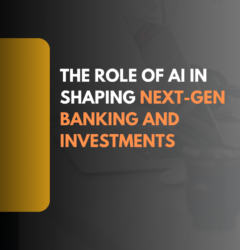Business, Social, Technology
Overcome Learning Challenges Amid COVID-19 Outbreak With Digitization
- By phelixad
- 2 Comments
09 Apr

|
Getting your Trinity Audio player ready...
|
Like several other capitals and industries, the education and learning industry has been harshly impacted by the COVID-19 pandemic worldwide, leading to the widespread closures of schools and universities.
As of 28 March 2020, over 1.7 billion learners were out of school due to school closures in response to COVID-19. According to UNESCO monitoring, over 100 countries have implemented nationwide closures, impacting nearly 90% of the world’s student population. Thanks to easy-to-use digital learning tools that provide a broad spectrum of remote learning solutions. Ministers have recently been scaling up multimedia approaches to ensure learning continuity around the world.
In France, ‘Ma classe à la Maison’ (my lesson at home), is devised to enable students to continue their studies at home and keep in touch with their teachers. Spain’s Educlan is an online channel supported by the Ministry of Education that presents educational resources during the period of suspension of classes.
Worldwide efforts to utilize technology to promote and maintain corporate remote learning, distance education and digital learning during the COVID-19 pandemic are emerging and growing briskly.
In the modern-day pattern, the digitized data is in the form of binary numbers, which facilitates computer processing and other operations. If stringently articulated, digitizing means the conversion of analog source material into a numerical format; the decimal or any other number system that can be used instead. The result is called digital representation or, more specifically, a digital image for the object, and digital form for the signal. Digitization is of crucial importance to data processing, storage, and transmission because it “allows information of all kinds in all formats to be carried with the same efficiency and also blended”.
There are multiple definitions of digital learning. I want to mention two significant ones. “Digital learning is any learning that is accompanied by technology or by instructional practice that makes effective use of technology. It encompasses the application of a wide spectrum of practices, including blended and virtual learning.”
“Digital Learning is “learning facilitated by technology that gives learners some element of control over time, place, path or pace.”
Technology is a tool that accouches and delivers content. It is an apt device that facilitates how digital content is the high-quality speculative learning material that is delivered through digital platforms. It ranges from new engaging, interactive and adaptive software to classic literature to video lectures to games. It isn’t merely a PDF file or an informative PowerPoint presentation. Learners are provided with learning content that requires internet access and an electronic device, which can be any Internet access device- a desktop, a laptop, an iPad and a smartphone. Technology remains the tool and not the instruction.
Technology only changes the role of the trainer. “Technology doesn’t equal a learning outcome. It’s a tool that enables learning outcomes”, quoted by DS Digital. Digital learning companies design brief and crisp interactive learning nuggets to engage learners and keep them interestingly engaged and motivated in their quarantine. The learning is delivered through various channels including videos, infographics, games, assessments, and quizzes.
The global digital learning market was worth an effective $107 billion in 2015. By 2025, however, Research and Markets believe that it can advance to a staggering total market value of $325 billion. Digital learning provides developing country’s learners with accessibility to world-class enriching and informative learning content which may not be available in-person in their home country. As organizations around the world postpone and cancel in-person meetings to curb the effect of the novel coronavirus, workplace learning is beginning to rise as one of the earliest and hardest-hit business activities.
Besides businesses Indian Government online learning platform SWAYAM has set up a plethora of free online courses to do its bit for the learners’ community as schools and universities shut down amid the COVID 19 lockdown. The two-and-a-half-year-old platform has created a repository of 1,900 courses available for students as they grapple with the global pandemic.
Businesses can’t afford to put capability building on hold. Whether the aim remains for the upskilling of employees at the business-unit level or a company-wide transformation. Beyond tactical steps, there are strategic measures, such as exploring alternative digital learning strategies, that managers can develop during this time of social distancing. The more robust learning capabilities that emerge could stand as a positive long-term result from this sobering period.
Work Operations have changed. The pandemic has triggered the need for virtual training and digital learning for organizations. Businesses need to go ahead of merely tracking the number of employees who complete digital training to measure effectiveness. What employees are learning and how they are mounting their skills and overcoming their competencies determines the gain or loss of virtual learning experiments. Digital Learning tools and technology enable employees to develop practical self-directed learning skills.
Writer – Smriti Chaubey
Cognigix I work with a true passion for writing. When I am not at my computer, you can find me with a book in my hand. Professionally I am a blogger, published poet, editor, content writer. I can develop queasy data to fighting fit and reader-friendly content. Writing has always been a prime part of my wondrous journey of life.



2 Comments